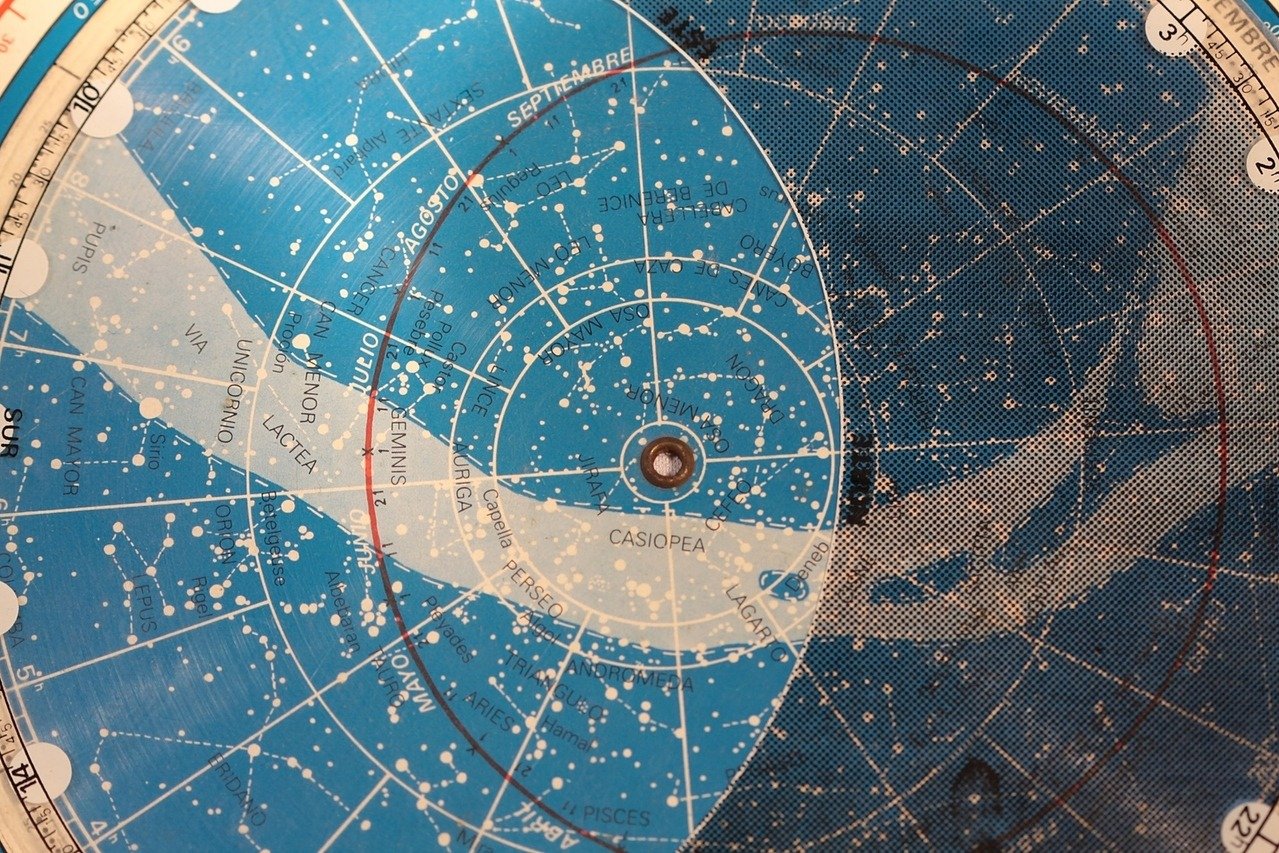Triangulum is a small Northern Sky constellation. It borders with constellations Andromeda, Perseus, Pisces and Aries.
Planet Earth is part of the Solar System, the Solar System is a component of the Milky Way Galaxy. But the cosmic hierarchy doesn’t stop there. Zoom out of the Milky Way and you will discover even bigger structures!
It turns out galaxies are not uniformly spread out through space, they form groups and even groups of groups. Our Milky Way, for example, is part of a cluster of galaxies, called The Local Group. And the Local Group is part of an even bigger Virgo Supercluster, which in turn is a lobe of a ginormous Laniakea Supercluster.
The Local Group
The Local Group is a bunch of galaxies contained in a “small” area 10 million light years across. There are 50 or so galaxies in our Local Group, most of them are dwarf galaxies. The three biggest members of the Local Group are three spiral galaxies galaxies: Milky Way, Andromeda and Triangulum. They are really massive and contain 95% of all the material of the Local Group.
You will find more information about our galactic home in the blog post The anatomy of the Milky Way Galaxy. To learn about Andromeda, visit one of our star dome shows about Andromeda galaxy and space distances.
And today we would like to tell you all about the third, lesser known (but totally awesome) Triangulum Galaxy.
Triangulum Galaxy
The name of the galaxy comes from the small Northern Sky constellation Triangulum where the galaxy can be seen. It is also known as M33 by its designation in the Messier catalogue. The Triangulum galaxy is located a whooping 3 million light years away from us. That means when we look at M33 we see the galaxy as it was 3 million years ago. That’s mind blowing! M33 is more that half the size of our Milky Way and contains around 40 million stars.
Here are the things to know about the Triangulum Galaxy:
-
I spy with my naked eye…The Triangulum Galaxy!
Just like Andromeda, Triangulum can be seen with a naked eye. In fact it bears the title of the farthest object one can see without an aid of a telescope or binoculars. But it’s not easy. You will need a very VERY dark sky to spot it. Can YOU find M33 on the sky?
-
Bar or no bar?
Because the Triangulum Galaxy is positioned “face-on”, we can see its features really well. We know that M33 is a spiral galaxy with two big symmetrical spiral arms and several smaller arms (they are called spurs). Unlike the Milky Way and Andromeda, M33 lacks a bar structure, so that the arms “grow” straight from the central region. But here is the big mystery: all the models of M33 based on the observational data lead to the galaxy quickly growing a strong bar. The only models that prevent the bar from growing lead to the multi-arm spiral structure! This apparent contradiction to the observations doesn’t mean that there is something wrong with the galaxy (phew!). It merely hints that our our models are not accurate and that we do not fully understand the dynamics of the galactic disc (o-oh). There is still so much to learn!
-
A black hole?
M33 is home to what we call ultraluminous X-ray source M33 X-8. Scientists find these mysterious powerful sources of X-ray radiation in many galaxies, usually at a rate of one per galaxy (although our Milky Way has none). Astronomers are not quite sure what these objects are. Possibly, they (at least some of them) are stellar-size black holes gobbling up the material from the outside. M33 X-8 is the closest such object to the Earth and we’ve been keeping an eye on for the past two decades! Recent observations with NASA NuSTAR X-ray space telescope are in good agreement with the black hole hypothesis (see this paper for more details)! Another black hole! So exciting!
-
Here comes galactic crash!
Andromeda Galaxy and Triangulum Galaxy are so close together that for a long time astronomers suspected that the two might be interacting. Some even thought that M33 was one of Andromeda’s satellite galaxies.
Thanks to the ESA satellite GAIA it recently became possible to look at the motions of the two galaxies in great detail. In February 2019 astronomers concluded that that either Triangulum Galaxy has already completed a very long orbit around Andromeda, or (and that’s more likely) it is on its first infall!
Knowing that Andromeda will eventually collide with our Milky Way Galaxy, we are very curious what role M33 will play in the upcoming galactic caboom!
Will M33 smash into Andromeda? Collide with the Milky Way? Will it be torn apart by its mighty neighbours or thrown out of the group? We’ll see!
Any questions or comments? Let our portable planetarium team know!

